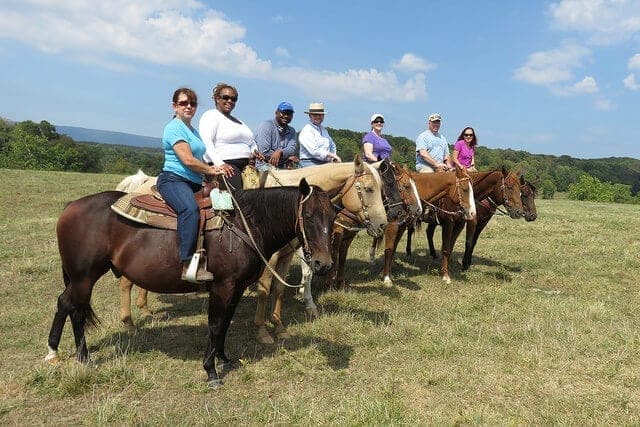Looking for a fun and exciting activity to do as a family? Look no further than horseback riding! In this article, we will explore the benefits of horseback riding as a family activity and how it can provide unforgettable experiences for everyone involved. From bonding with each other and the horses to exploring nature and building confidence, horseback riding offers a unique and thrilling adventure that is sure to create lasting memories. So saddle up and get ready to embark on a journey that will bring your family closer together and create new experiences that will be cherished for years to come.
Benefits of Horseback Riding as a Family Activity
Horseback riding is not only a fun and thrilling activity, but it also comes with numerous benefits for the whole family. From physical health to mental well-being and social interaction, horseback riding offers a unique experience that can bring families closer together.
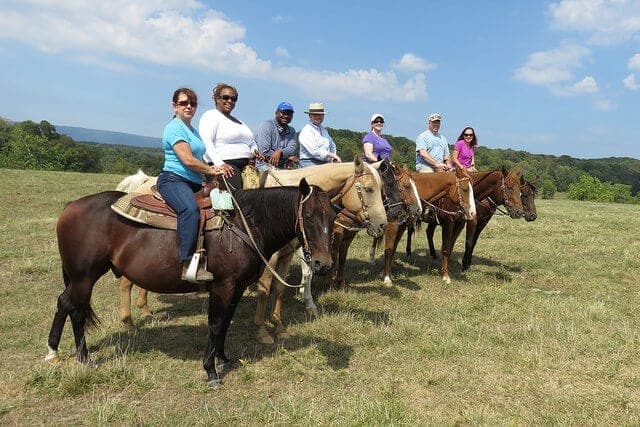
Physical Health Benefits
When you go horseback riding as a family, you engage in a full-body workout without even realizing it. Riding a horse requires balance, coordination, and core strength, which helps to improve your overall fitness level. It also helps to develop muscle strength and tone, particularly in the legs, thighs, and abdomen. The motion of riding also stimulates your cardiovascular system, increasing your heart rate and aiding in the improvement of endurance.
Mental Health Benefits
Apart from the physical benefits, horseback riding also has significant mental health advantages for both adults and children. Spending time with horses can be incredibly therapeutic, as it allows you to connect with nature and animals. The calming nature of horses and the opportunity to be surrounded by peaceful scenery can help reduce stress, anxiety, and even symptoms of depression. Horseback riding provides a sense of freedom and can boost your mood, leaving you feeling refreshed and rejuvenated.
Social Benefits
Horseback riding is a wonderful way to strengthen the bond within your family. When you ride together, you can experience the joy of exploring nature, facing challenges, and creating lasting memories. It promotes teamwork and communication as you work together to guide your horses and navigate various terrains. Additionally, horseback riding often involves interaction with other riders, stable owners, and instructors, providing ample opportunities for new friendships and social connections.
Choosing the Right Horseback Riding Experience
When embarking on a family horseback riding adventure, it’s essential to carefully consider certain factors to ensure an enjoyable and safe experience for everyone involved.
Considerations for Beginners
If you or your family members are new to horseback riding, it’s essential to choose an experience suitable for beginners. Look for riding schools or packages that offer introductory lessons or guided trail rides specifically designed for those with limited or no riding experience. These experiences will provide the necessary guidance and instruction to help build confidence and skill.
Different Types of Riding
Horseback riding encompasses various disciplines, each offering a unique experience. Some common types of riding include trail riding, Western riding, English riding, dressage, and jumping. Consider the preferences and interests of your family members when selecting the type of riding experience you want to pursue. Each discipline has its own set of techniques and styles, so choose one that aligns with your goals and aspirations.
Selecting a Suitable Location
When it comes to enjoying horseback riding as a family, the location plays a crucial role. Look for reputable stables or riding schools that offer safe and well-maintained facilities. Consider the proximity of the location to your home, as well as the availability of amenities such as restrooms and picnic areas. It’s also worth exploring locations that offer diverse trail options, allowing you to experience varying terrains and landscapes.
Preparing for a Horseback Riding Trip
Before heading out on your horseback riding adventure, it’s crucial to take some necessary precautions, dress appropriately, and ensure you have the right equipment.
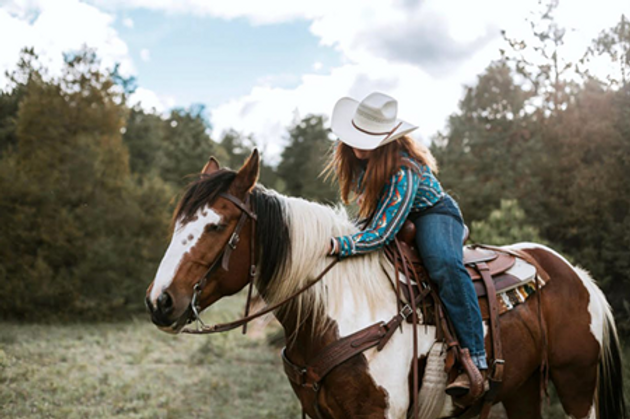
Safety Precautions
Horseback riding can be a physically demanding activity, so it’s important to prioritize safety. Always follow the instructions and guidelines provided by the riding school or instructor. Wear a properly fitted helmet to protect yourself from head injuries in case of a fall. Familiarize yourself with basic riding safety rules, such as staying in control of your horse, keeping a safe distance between horses, and being aware of your surroundings.
What to Wear
Choosing the right attire for horseback riding is essential for safety and comfort. Wear long pants, preferably stretchy or flexible material, to protect your legs from rubbing against the saddle. Opt for a comfortable, well-fitted riding helmet that meets safety standards. Avoid wearing loose clothing or open-toed shoes, as they can get caught in the stirrups or hinder your ability to ride properly.
Essential Equipment
While the riding school or stable will typically provide the necessary equipment, it’s a good idea to have some basic items of your own. Invest in a good pair of riding boots with a small heel, as they provide grip and prevent your feet from slipping through the stirrups. Additionally, consider purchasing a riding helmet for each family member for hygiene purposes. It’s also advisable to carry water bottles, snacks, and sunscreen, especially for longer riding trips.
Finding and Selecting a Trustworthy Riding School
To ensure a positive and safe horseback riding experience for your family, it’s essential to find a reputable and reliable riding school. Here are some steps to follow when selecting the right riding school.
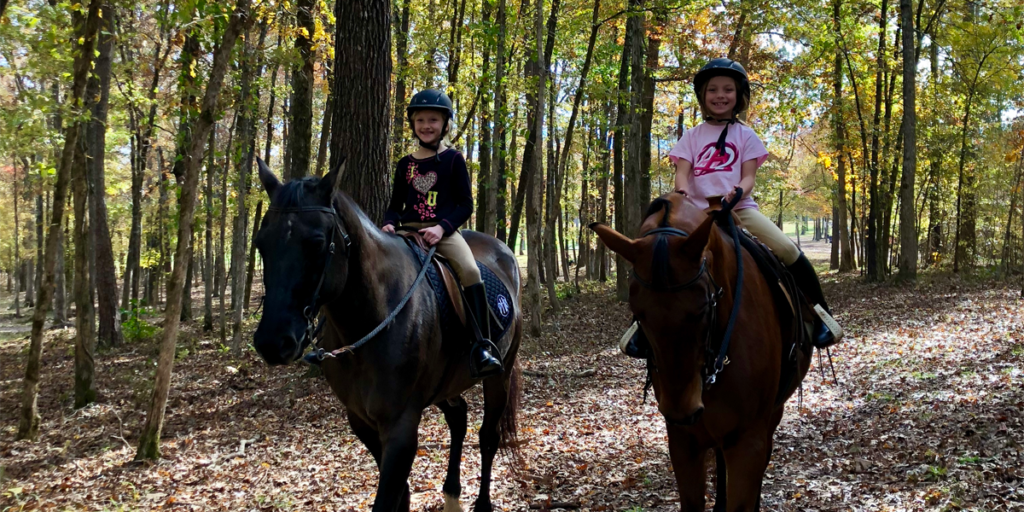
Researching Riding Schools
Start by researching different riding schools in your area. Look for schools with a good reputation and positive reviews from previous customers. Online platforms and forums dedicated to horseback riding can be an excellent source of recommendations and testimonials. Pay attention to the school’s overall rating, as well as specific feedback regarding their instructors, facilities, and safety measures.
Checking Credentials and Certification
Once you have shortlisted a few riding schools, dig deeper into their credentials and certifications. A trustworthy riding school should have certified instructors who are experienced and qualified to teach different levels of riders. Look for certifications from reputable equestrian organizations such as the Certified Horsemanship Association (CHA) or the American Riding Instructors Association (ARIA). These certifications ensure that the instructors have undergone comprehensive training and adhere to industry standards.
Visiting the School and Meeting the Instructors
Before finalizing your choice, it’s crucial to visit the riding school in person to get a sense of the overall environment and meet the instructors. Observe their teaching techniques and how they interact with the horses and students. Evaluate the condition of the facilities, including the stables, riding arenas, and trails. This personal visit will help you assess if the school is a good fit for your family and if you feel comfortable entrusting them with your horseback riding experience.
Horseback Riding Techniques for Beginners
If you or your family members are new to horseback riding, learning some basic techniques is essential to ensure a safe and enjoyable experience. Here are a few fundamental riding techniques for beginners:
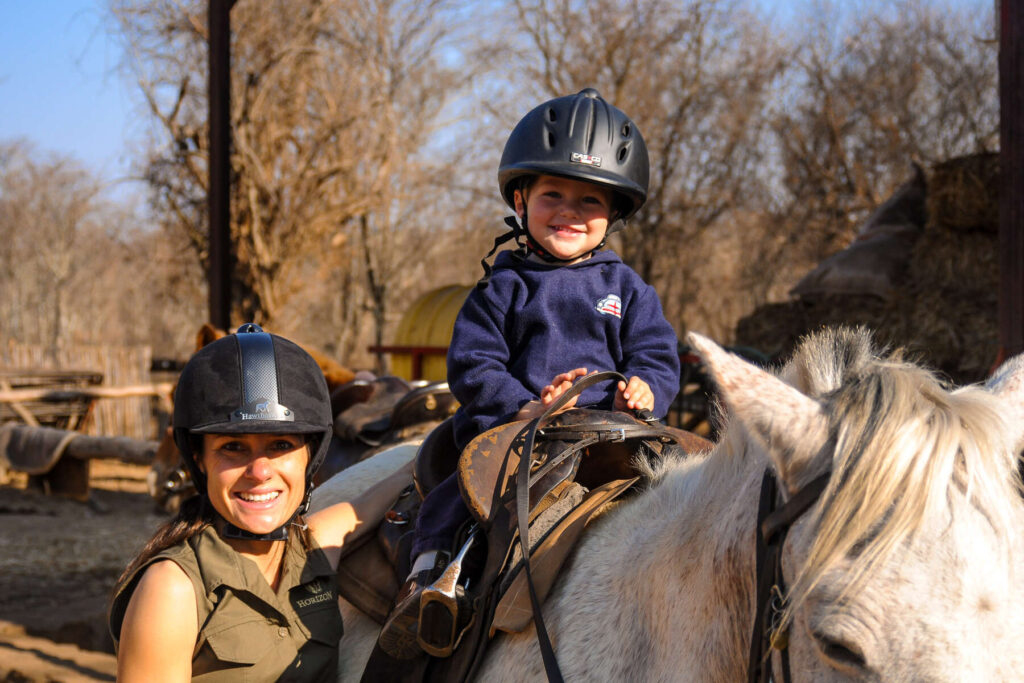
Mounting and Dismounting
Proper technique for mounting and dismounting a horse is crucial for your safety. When mounting, always approach the horse from the left side, also known as the “near side.” Face the horse’s shoulder and place your left foot in the stirrup while holding onto the reins and the saddle with your left hand. Push off with your right foot and swing your right leg over the horse’s back, gently landing in the saddle. To dismount, reverse the process by swinging your right leg back over the horse’s back and gently landing on the ground.
Proper Riding Position
Maintaining a correct riding position is important for balance, control, and communication with the horse. Sit tall in the saddle with your back straight and shoulders relaxed. Keep your heels down and your toes pointed forward, ensuring a secure position in the stirrups. Maintain a slight bend in your knees, allowing your body to move with the horse’s motion. Keep your eyes and head up, looking ahead in the direction you want to go.
Basic Riding Commands
Learning basic riding commands is crucial for communicating with your horse effectively. Start by mastering the basic commands of stopping, walking, and turning. To stop, gently pull back on the reins while using your seat and voice to ask your horse to halt. To walk, apply light pressure with your legs and say “walk” while maintaining a relaxed seat. Turning is done by applying slight pressure with the reins in the direction you want to go, accompanied by supporting leg aids.
Safety Tips for Horseback Riding with Children
When horseback riding with children, it’s essential to prioritize their safety and well-being. Here are some safety tips to keep in mind:

Choosing Age-Appropriate Activities
When planning horseback riding activities for children, it’s crucial to consider their age and level of experience. Younger children may enjoy shorter pony rides or gentle trail rides, while older children can opt for lessons and more advanced riding experiences. Ensure that the activities and horses chosen are suitable for their skill level to minimize the risk of accidents or injuries.
Supervision and Communication
Adult supervision is vital when children are horseback riding. Assign a responsible adult to be present at all times to closely monitor the children and ensure their safety. Additionally, establish clear communication channels between the adults and children. Teach children how to ask for help or express any discomfort or concerns while riding. Encourage open dialogue and constant communication throughout the riding experience.
Teaching Children About Safety
Educating children about horse safety is essential to instill good habits and prevent accidents. Teach children about approaching horses slowly and calmly, respecting their personal space, and avoiding sudden movements or loud noises. Instruct them on how to properly mount and dismount a horse and how to hold the reins correctly. Emphasize the importance of wearing a riding helmet and other safety gear. Regularly reinforce these safety lessons to ensure they become second nature for children.
Creating Memorable Riding Experiences as a Family
Going horseback riding as a family is an excellent opportunity to make lasting memories and strengthen your bond. Here are some tips for creating unforgettable riding experiences:
Planning the Perfect Route
Take the time to plan your riding route in advance to ensure an enjoyable experience for everyone. Consider the skill levels and preferences of each family member. Choose routes that offer beautiful scenery, interesting trails, or the chance to see wildlife. Consult with local riding guides or stable owners who can provide insights and recommendations based on your location.
Exploring Nature on Horseback
One of the greatest advantages of horseback riding is the ability to immerse yourself in nature. Take advantage of this opportunity and encourage your family members to appreciate the beauty of their surroundings. Point out interesting plants, animals, or geological features along your trail. Encourage conversation and sharing of observations to enhance the experience and deepen your connection with nature.
Engaging in Fun Riding Games
Incorporating fun riding games into your family horseback riding activities can add excitement and a sense of friendly competition. Play games such as “Simon Says” on horseback, where one family member acts as the leader, giving commands that others must follow. Other games like “Red Light, Green Light” or “Egg and Spoon” races can also be enjoyed on horseback. These games provide a chance for laughter and bonding, making your riding experience even more enjoyable.
Dealing with Challenges in Horseback Riding
Horseback riding, like any physical activity, can come with its fair share of challenges. Here are some common challenges and tips for overcoming them:
Overcoming Fear and Anxiety
Fear and anxiety are common when starting horseback riding, especially for beginners. It’s important to acknowledge these feelings and take things at your own pace. Start with short rides or lessons and gradually increase the duration and difficulty. Take the time to build trust and rapport with your horse, as a strong bond can help alleviate fear and anxiety. Communicate openly with your instructor or riding companions, expressing any concerns or fears you may have.
Dealing with Challenging Horse Behaviors
Horses, like humans, can exhibit challenging behaviors. Common issues include stubbornness, spookiness, or resistance to commands. In such cases, it’s crucial to remain calm and composed. Seek guidance from your instructor or a knowledgeable equestrian professional to understand the root cause of the behavior and develop strategies to address it. Consistency, patience, and positive reinforcement techniques can go a long way in resolving challenging horse behaviors.
Addressing Physical Discomfort
Horseback riding can sometimes lead to physical discomfort, such as sore muscles or an achy back. It’s important to address these issues to prevent them from becoming chronic or affecting your overall riding experience. Proper warm-up and stretching exercises before riding can help alleviate muscle soreness. Invest in a well-fitted saddle that provides adequate support and cushioning. If discomfort persists, consult with a qualified equine therapist or chiropractor who can assess and address any alignment or musculoskeletal issues.
Maintaining Horseback Riding Skills and Progression
To continue progressing and enjoying horseback riding as a family, it’s important to maintain your skills and knowledge. Here are a few ways to do so:
Regular Practice and Lessons
Consistent practice and regular lessons can help you improve your riding skills and confidence. Set aside dedicated time for practicing different techniques, such as trotting, cantering, or jumping. Consider taking additional lessons to learn new skills or refine existing ones. Practice not only helps you build muscle memory but also strengthens your bond with your horse.
Participating in Competitions or Events
Participating in horseback riding competitions or events can be an exciting way to showcase your skills and set goals for improvement. Look for local horse shows or competitions that offer suitable divisions for your family members’ skill levels. Participating in these events fosters a sense of achievement, boosts your confidence, and provides opportunities for feedback and learning from experienced riders and judges.
Continuing Education and Training
Horseback riding is a lifelong learning journey, and there are always new techniques and knowledge to acquire. Consider enrolling in specialized clinics or workshops that focus on specific disciplines or aspects of riding. Stay updated with the latest equestrian literature, online resources, and educational videos. Attending equestrian conferences or seminars can also provide valuable insights and networking opportunities within the horseback riding community.
Building a Strong Bond between Family and Horses
Beyond the physical and recreational aspects, horseback riding offers a unique opportunity to build a strong bond between your family and these majestic animals. Here are some ways to strengthen the connection:
Understanding Horse Psychology
Take the time to learn about horse behavior and psychology. Understanding how horses think, communicate, and respond to cues will help you develop a deeper connection and build mutual trust. Observe your horse’s body language and learn to interpret their moods and emotions. This understanding will enable you to communicate more effectively and create a mutually beneficial partnership.
Building Trust and Respect
Trust and respect are the foundation of any successful relationship, including the one between a rider and their horse. Focus on building a trusting relationship with your horse by maintaining consistency in your cues and commands. Be patient and understanding, allowing your horse to overcome any fears or uncertainties. Treat your horse with kindness and respect, ensuring their physical and emotional well-being.
Engaging in Horse Care and Grooming
In addition to riding, engaging in horse care and grooming activities as a family can deepen your bond with the horses. Participate in daily grooming sessions, which not only keep the horse’s coat clean and healthy but also allow for physical contact and bonding. Learn about basic equine care, such as feeding, watering, and administering basic first aid. Involving the whole family in the care of the horses fosters a sense of responsibility and creates a shared connection with these magnificent creatures.
By embracing horseback riding as a family activity, you open up a world of adventure, learning, and togetherness. Whether it’s the physical health benefits, the mental well-being, or the social interaction, horseback riding offers something for everyone. Prioritize safety, choose the right riding school, and continuously work on improving your skills and knowledge. Create memories, build bonds, and enjoy the unique experience of horseback riding with your loved ones.
